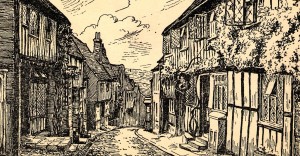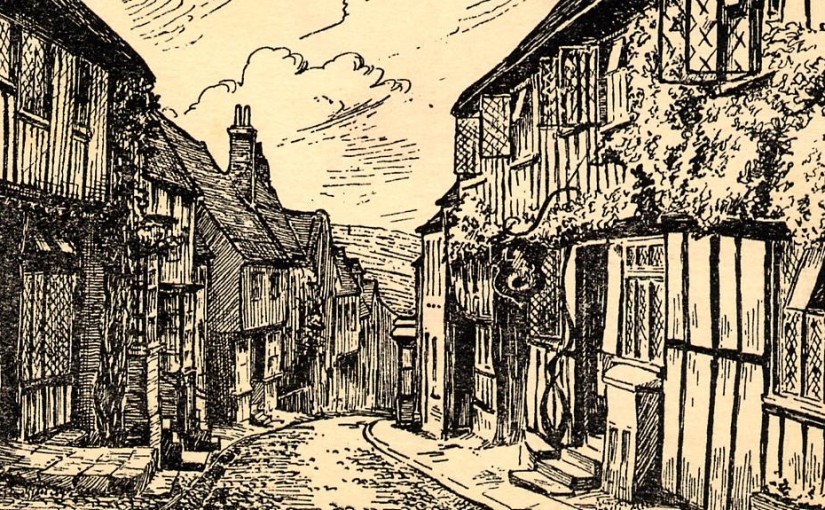Mermaid Street The haunt of artists, and one of the most widely known streets in the world. This old street leading, as it did, straight down to the Strand Gate, has seen many changes; smugglers carrying their contraband up to the Inns and Taverns that abounded in this part of the town; Kings riding up to the stately Lamb House; reformers like Wesley and Elizabeth Fry on their way to the Chapel that remains to-day – all these have passed but the cobbles of Mermaid Street remain unchanged, just as uneven and as torturous to walk upon as in those days. The building on the right hand corner is the OLD CUSTOM HOUSE and was used for many years for that purpose, itself being of an old building known as the OLD LONDON TRADER, the reputed resort of robbers and smugglers. It is ironical that the spot on which smugglers traded their contraband should ultimately become such a law abiding office as a customs house. Proceeding up Mermaid Street we have on the right hand side Trader Passage (named after the London Trader) once used as its name implies. on the corner is a fourteenth century building. The original building was burned during the last fire of 1377 and massive oak beams that escaped the full force of the fire abound in the present house. Recent renovations have helped to bring to light many features of hitherto obscured beauty. The dining room is a splendid specimen of the period containing a fine fireplace with a back dated 1649. Two fresco bricks adorn the back of the fireplace similar to those which can be seen in the Rye Museum. Upstairs another old fireplace has been uncovered, smaller that the one below, but a fine example of early brickwork. There are frescoes on the staircase over 400 years old and quite a few exquisite carvings on the beams. Some of the latter have been wantonly defaced by some previous owner.

From the July 2005 issue of “Rye’s Own”
